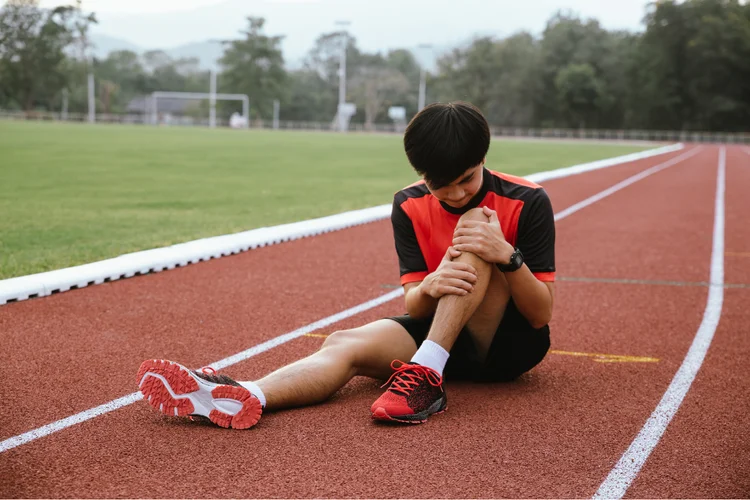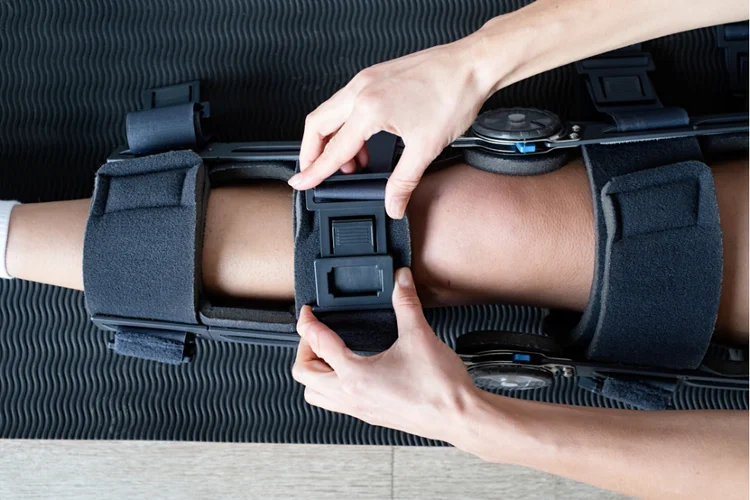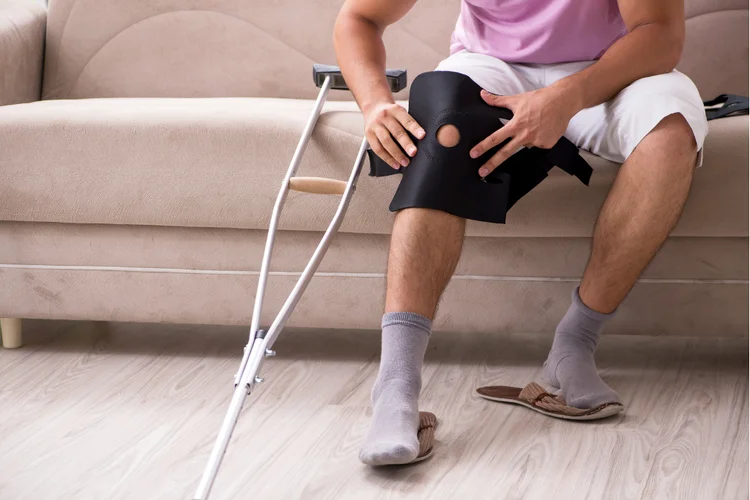How to Tear Your ACL on Purpose: Understanding the Risks and Realities
Tearing your ACL on purpose is dangerous and strongly discouraged. In this article, Dr Foo outlines the risks, long-term consequences, and misconceptions around intentional injury.
MBBS (University of London) | MMed (Ortho) | FRCSEd (Ortho) | FAMS (Ortho)



Let’s address the obvious question: why would anyone want to tear their ACL on purpose?
Perhaps out of curiosity, a misguided challenge, or an attempt to avoid certain obligations.
Whatever the reason, the truth is, you absolutely shouldn’t!
Intentionally damaging this critical ligament can lead to debilitating pain,
long-term mobility issues, and a gruelling recovery process. Your ACL plays a
vital role in stabilising your knee, and an injury to it can significantly impact your
quality of life.
In this article, we’ll dive into how ACL tears happen, why they’re so serious, and what you
should know to protect your knees and stay injury-free.
How ACL Tears Occur
To understand how an anterior cruciate ligament (ACL) tear happens, it’s important to look at the forces and stresses that weaken the ligament. ACL tears usually occur because of:
- Sudden Deceleration and Pivoting – Rapid stops and quick changes in direction, often seen in sports like soccer, put significant stress on the ACL. These forces can overwhelm the ligament's ability to keep the knee stable, leading to partial or complete tears.
- Direct Trauma – A heavy impact to the knee, such as during a tackle or collision, can force the joint into unnatural positions like overextending or bending too far inward or outward. This can stretch the ACL beyond its limit, causing it to rupture.
- Improper Landing Technique – Landing from a jump with misaligned knees places additional strain on the ACL. Weak muscles or an imbalance between the quadriceps and hamstrings further increase the ligament's vulnerability to injury.
Potential Consequences of an ACL Tear
Tearing your ACL or any injury of this nature can lead to severe, long-term repercussions that affect your physical functioning, lifestyle, and overall well-being. These include:

Recovery Challenges
Recovering from an ACL tear is a demanding process that involves both physical and emotional challenges:
- Lengthy rehabilitation – Recovery often takes 9 to 12 months or longer, depending on the severity of the injury and whether surgery was required.
- Physiotherapy requirements – Extensive physiotherapy is required to restore strength, mobility, and knee stability.
- Difficulty with basic activities – Tasks like walking, running, or standing may become challenging, limiting engagement in daily activities or sports.
- Muscle loss – Prolonged inactivity can lead to muscle loss in the affected leg, requiring significant effort to rebuild strength.
- Emotional impacts – Feelings of frustration and reduced motivation can affect the recovery process, emphasising the psychological challenges involved.
Long-Term Physical Impact
Damage to the ACL can result in significant long-term consequences that affect knee health and overall mobility:
- Increased osteoarthritis risk – Damage to the ACL raises the likelihood of early-onset osteoarthritis, leading to chronic joint deterioration, persistent pain, and instability.
- Susceptibility to reinjury – Even with reconstruction and proper rehabilitation, the ACL may not fully regain its original tensile strength, leaving it more vulnerable to stress and re-injury, especially during high-impact activities.
- Ongoing instability – Long-term instability may limit physical activities and increase the risk of further damage to surrounding knee structures.

Financial and Professional Costs
The financial and professional impacts of an ACL injury can be significant:
- Cost of care – Surgery, rehabilitation, and follow-up appointments can incur substantial expenses.
- Work and career impact – Temporary physical limitations may reduce productivity or disrupt career progression.
Why You Should Prioritise Knee Health
Your knees are essential for almost every movement involving your legs, making their care a priority. Maintaining the health of your ACL and other knee structures supports mobility and an active lifestyle today, while also helping to prevent chronic pain, stiffness, and joint degeneration as you age. By prioritising knee health now, you can preserve your independence and quality of life in the years ahead.
Summary
Your ACL is vital for maintaining knee stability and overall mobility. Failing to care for it or
risking injury can lead to significant physical, emotional, and financial
challenges, both in the short and long term. By focusing on proper care, injury
prevention, and timely medical attention, you can keep your knees strong and healthy for
years to come.
If you are experiencing severe or persistent knee pain or instability, consider scheduling a consultation
with us at Apex Sports Clinic. A proper assessment and appropriate treatment can help address your
concerns and support your recovery.
Every patient deserves a treatment plan tailored to their needs. We start with non-surgical approaches before considering more invasive interventions.
Where Can I Find an ACL Specialist in Singapore?
Apex Novena
admin@apexsportsclinic.sg
101 Irrawaddy Rd, #18-12 Royal Square Medical Centre, Singapore 329565
Nearest MRT: NS20 Novena
Apex East Coast
admin@apexsportsclinic.sg
112 E Coast Rd, #03-03/04 i12 Katong, Singapore 428802
Nearest MRT: TE26 Marine Parade
Why Do Patients Choose Apex Sports Clinic?
Sports Doctor in Singapore: Personalised & Affordable Care
Progressive Treatment Philosophy
We prioritise personalised, non-invasive solutions, progressing to specialised treatments, including surgery, only when needed for more effective and targeted care.
Holistic Patient-Centred Care
From diagnosis to rehabilitation, we provide comprehensive and seamless care for a wide range of orthopaedic conditions.
Specialist in Sports Orthopaedics & Injury Management
We combine expert injury management with a proactive approach to maintaining your body’s strength and function, so you can recover fully and perform at your peak.
Patient Journey
1 . Schedule Your Appointment

2 . Expert Diagnosis & Consultation

3 . Customised Treatment Plan

Schedule an Appointment

Our Insurance Partners






Frequently Asked Questions (FAQs)
ACL tears typically occur due to high-stress movements, such as sudden stops, rapid changes in direction, or landing improperly from a jump. Whatever the reason, you should never attempt to deliberately injure your ACL, as it can lead to debilitating pain, long-term mobility issues, and a gruelling recovery process.
Activities that involve sudden deceleration, pivoting, or quick directional changes, such as basketball, soccer, and skiing, are common causes of ACL tears. High-impact sports, improper landing techniques, and direct trauma to the knee also significantly increase the risk.
The ACL is strong, but it can tear if too much force is applied. A sharp twist of the knee or a strong hit, like in a tackle, can cause it to tear. The exact amount of force depends on the person's ligament strength and overall knee condition.
Tearing your ACL is often extremely painful. Most individuals describe a sharp, immediate pain at the moment of injury, often accompanied by a popping sensation. Swelling and difficulty bearing weight on the injured leg usually follow.
Deliberately causing an ACL tear is highly dangerous and should never be attempted. The injury leads to severe pain, significant loss of mobility, and a lengthy recovery process, with long-term consequences that can greatly impact quality of life.
The ACL is one of the most commonly injured ligaments because it plays a key role in stabilising the knee and handles a lot of stress during activities. However, how easily a ligament tears can depend on factors like the type of movement and a person’s physical condition.
ACL tears often happen during movements that put a lot of stress on the knee. These include rapidly stopping or pivoting, landing awkwardly from a jump, or twisting the knee too much. A direct blow to the side of the knee, such as in a collision or tackle, can also cause the ligament to tear.
Athletes who play high-impact sports like basketball, soccer, or skiing are the most likely to tear their ACL because of the quick movements and stress on their knees. Women are also more at risk due to differences in body structure and how their knees handle stress.
ACL surgery itself is not painful due to anaesthesia. However, post-surgery recovery can involve discomfort and swelling, which is managed with medication, physiotherapy, and proper care.
ACL tears are not rare, particularly among athletes and individuals who participate in high-impact or high-risk activities. They are one of the most common knee injuries, especially in sports medicine.
Pain levels vary by individual, but ACL tears, meniscus tears, and patellar dislocations are often described as some of the most painful knee injuries due to the immediate trauma and instability they cause.
Movements that put too much stress on the ACL can increase the risk of injury. Twisting the knee while the foot is firmly planted, overextending the knee, or landing on a straight leg after a jump can all strain the ligament. Sudden stops or pivots without proper technique also place significant pressure on the ACL, making these movements particularly risky.
Tearing your ACL is a common knee injury, especially during activities that put a lot of stress on the ligament, like sudden stops, twisting, or improper movements. While it can happen quickly, it leads to significant pain, loss of mobility, and a long recovery process, so it should not be taken lightly.
Whether ACL surgery is appropriate for a 15-year-old depends on several factors, including the severity of the tear, their activity level, and their stage of physical growth. Consulting an orthopaedic specialist or surgeon is necessary to evaluate the condition and determine the most suitable treatment plan.
A fully torn ACL does not heal on its own because the ligament lacks sufficient blood supply to repair itself. Surgery is often required for complete tears, especially in active individuals or those seeking to return to high-impact activities.

